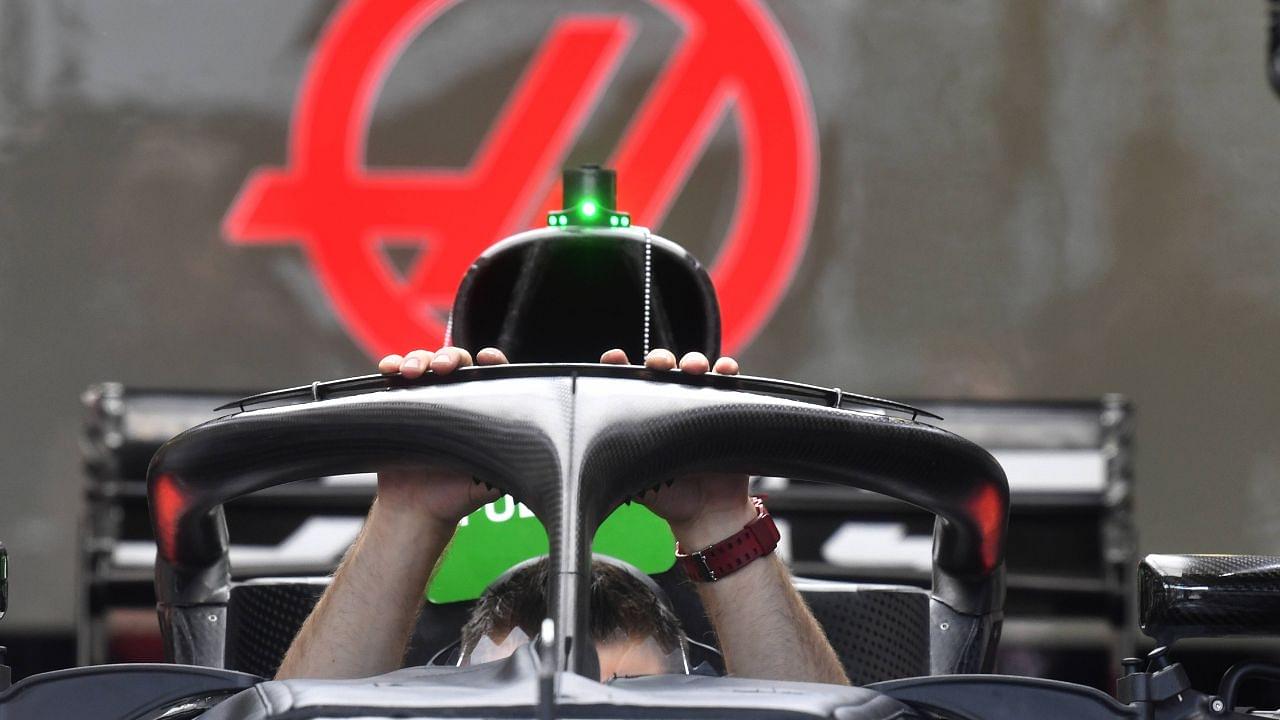F1 introduced a new safety device called the Halo in 2018, three years after Jules Bianchi unfortunately passed away due to his horrific accident at the 2014 Japanese Grand Prix. Although many criticized the Halo because it hurt the appearance of the cars, the critics were quick to take their words back when they realized how effective the device has been in saving lives in the recent past.
The Halo not only played its part when Charles Leclerc had a nasty accident at the Belgian Grand Prix in 2018, but also during Romain Grosjean’s life-threatening accident at the Bahrain GP in 2020. More recently, Guanyu Zhou also suffered only minor injuries following his nasty crash at the 2022 British GP. So, what is the Halo and what are its components?
What is the Halo in F1 and how is it made?
According to a report issued by racecar-engineering.com, the Halo is made up of titanium alloy and contains three key components. It has a front section at the center, called the V transition. Then, it also has two tube sections that are welded together. And lastly, it has rear mounts.
Many initially believed that the Halo was made entirely of carbon fiber. While the Halo certainly consists of it, it is also made from a titanium alloy known as Grade 5 6AL4V. This is an aerospace-grade material. Consequently of this material, the Halo weighs only seven kg but can withstand a much greater weight.
Germany’s CP Autosport, which is one of the three companies that the FIA chose to produce the Halo, explained how they manufactured this safety device. As quoted by fia.com, Steffen Zacharias of Germany’s CP Autosport said, “You need state-of-the-art machining parts to do the pre-machining and the post-welding final machining“.
He then adds that to carry out the welding, they need a chamber and a closed atmosphere. A closed space is essential to prevent any foreign objects from interfering with the process. After this process finishes, the whole device will undergo heat treatment to strengthen it.
Following the conclusion of the heat process, testing happens. There can be no compromise on any of the steps as the Halo has to withstand 125 kiloNewtons of force from above for five seconds without a failure to any part of the survival cell. This is equivalent to 12 tonnes in weight!
Does F1 Halo impact aerodynamics?
The introduction of the Halo has indeed brought challenges for aerodynamicists. McLaren’s former Chief Technical Officer of Aerodynamics, Peter Prodromou, explained the challenges teams now face.
As quoted by racecar-engineering.com, he stated that the introduction of the Halo affects the flow into the engine air intake and the cooling of the rear wing. Since the Halo has resulted in teams losing performance, the FIA compensated by permitting teams a 20mm area of freedom in which they could develop aerodynamic fairings.
Can F1 drivers see past the Halo?
The Halo is indeed an intruding device for drivers. It is this towering device that racers have to ignore while driving at speeds over 200mph.
Soon after the Halo was first introduced, Williams released a video of the view their drivers had from the cockpit. Although most people driving the cars would consider the Halo a distraction because of its sheer size, F1 racers are far from ordinary. They anyways have several challenges to navigate each time they step into the car.
They not only have to drive at breathtaking speeds but also have to communicate with their race engineers for strategy. If that was not it, they also have several buttons on the steering wheel that they have to use at the right time to ensure that they can optimize their lap times.
Who has the Halo saved in F1?
Considering the appearance of the Halo, it seems understandable why there were many critics initially. Lewis Hamilton was one of them. He referred to the Halo as the worst-looking addition to F1 and hoped that the sport would never introduce it.
Little did he know at the time that this same device would save him. During the infamous 2021 Italian GP, Max Verstappen’s Red Bull landed over Hamilton‘s Mercedes.
Consequently, the Briton was trapped with nowhere to go. It was the Halo that gave him the space to get out of his car unscathed. However, it’s pertinent to note that this is just one of the many instances when this safety device has more than played its part in saving several drivers.
Which other drivers has the Halo saved?
The first notable incident took place at the 2018 Belgian GP when Fernando Alonso’s car launched over Charles Leclerc’s. As per the data received from racecar-engineering.com, the Halo endured a 56kN load on that occasion. Consequently, it was clear that this device could withstand extreme forces and prevent the drivers during such horrifying crashes.
Arguably the greatest implementation of the Halo happened during the 2020 Bahrain GP. In that instance, Romain Grosjean’s Haas collided with the barrier at a high speed, resulting in the car bursting into flames.
Although several feared the worst at that moment, the Halo created a protective zone around Grosjean’s head. Since this device helped deflect the barrier, it gave the Frenchman the opportunity to get out of his car as quickly as possible.
Most recently, the Halo helped save Zhou Guanyu in escaping with only minor injuries following his nasty crash at the 2022 British GP. The 24-year-old collided with multiple rivals on that occasion, resulting in his car going upside down and then airborne, crashing into the barriers.
Since the Halo in this manner has time and again proved instrumental in saving lives, one cannot deny its importance in F1. It gives the drivers less to worry about as they can race at insane speeds with a more relaxed mind.

